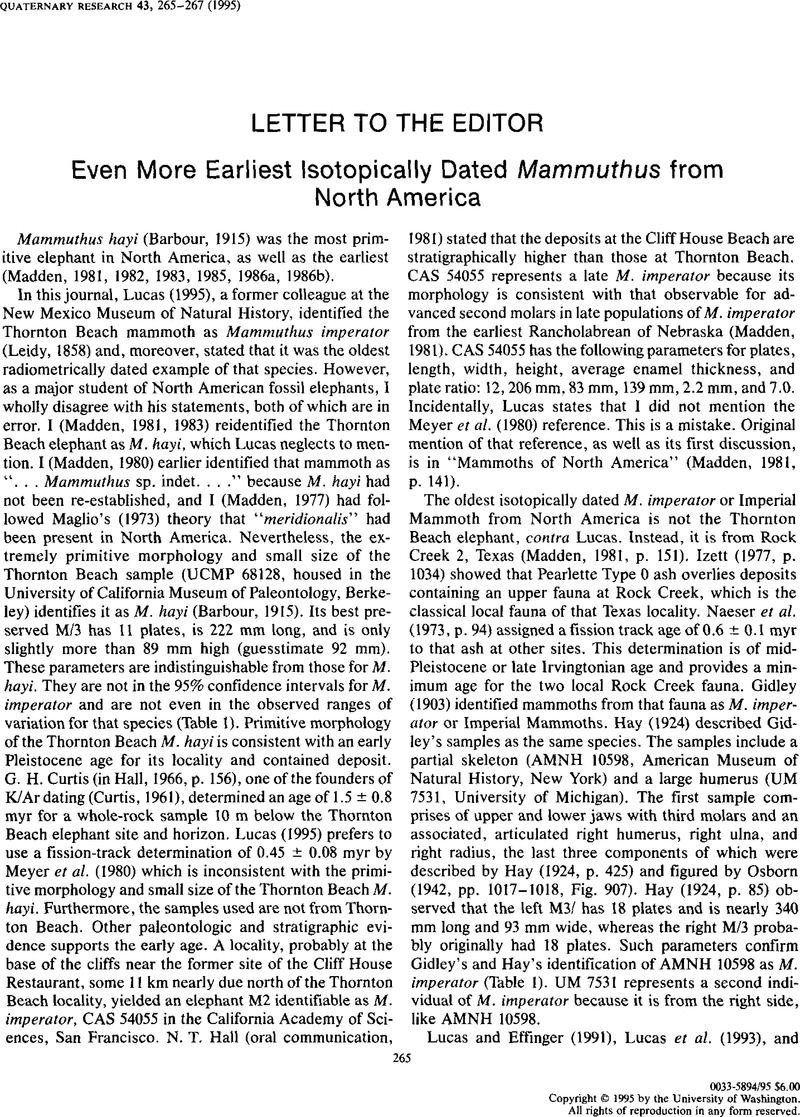Crossref Citations
This article has been cited by the following publications. This list is generated based on data provided by Crossref.
Lucas, Spencer G.
Morgan, Gary S.
Estep, John W.
Mack, Greg H.
and
Hawley, John W.
1999.
Co-occurrence of the proboscideansCuvieronius, Stegomastodon, andMammuthusin the lower Pleistocene of southern New Mexico.
Journal of Vertebrate Paleontology,
Vol. 19,
Issue. 3,
p.
595.
Cassiliano, Michael L.
1999.
Biostratigraphy of Blancan and Irvingtonian mammals in the Fish Creek-Vallecito section, southern California, and a review of the Blancan–Irvingtonian boundary.
Journal of Vertebrate Paleontology,
Vol. 19,
Issue. 1,
p.
169.
MORGAN, GARY S.
and
LUCAS, SPENCER G.
2003.
Chapter 12.
Bulletin of the American Museum of Natural History,
Vol. 279,
Issue. ,
p.
269.
Lister, A. M.
and
Sher, A. V.
2015.
Evolution and dispersal of mammoths across the Northern Hemisphere.
Science,
Vol. 350,
Issue. 6262,
p.
805.
Lucas, Spencer G.
Morgan, Gary S.
Love, David W.
and
Connell, Sean D.
2017.
The first North American mammoths: Taxonomy and chronology of early Irvingtonian (early Pleistocene) Mammuthus from New Mexico.
Quaternary International,
Vol. 443,
Issue. ,
p.
2.





